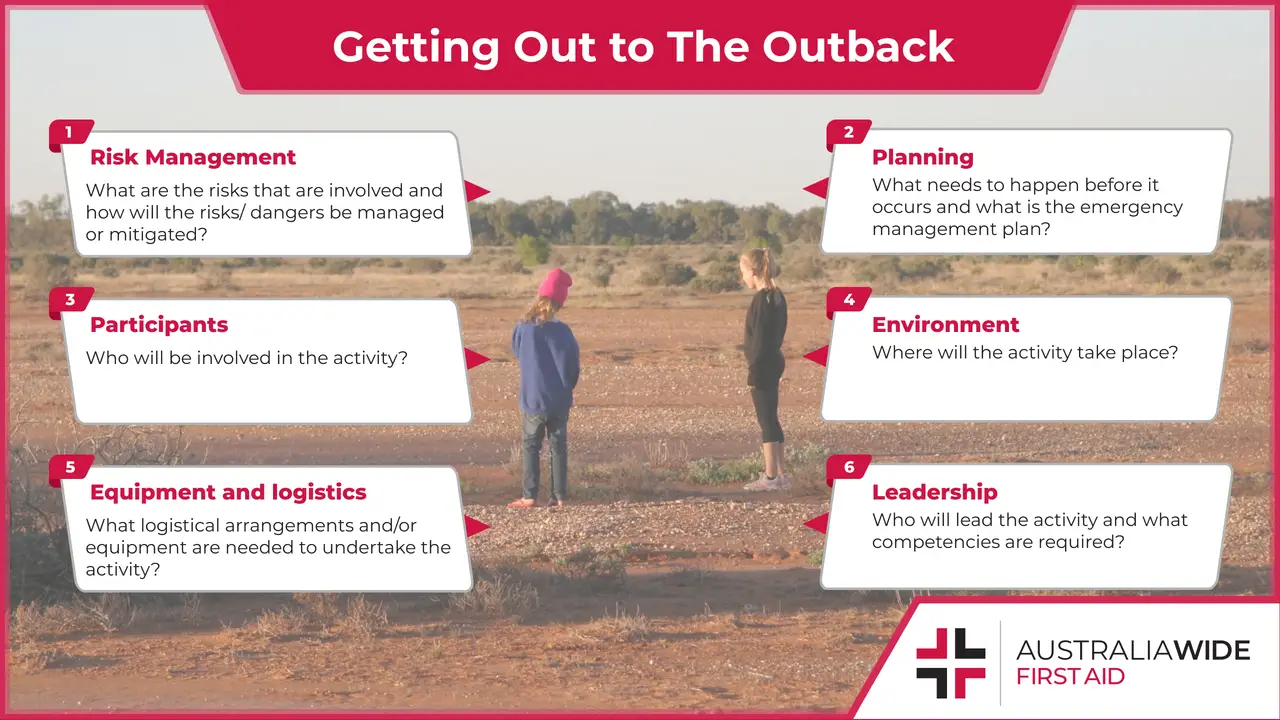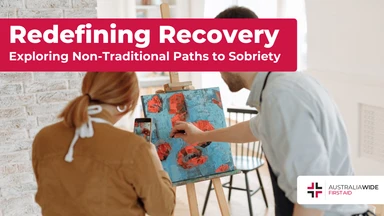A Guide To Enjoy The Australian Outdoors


This article will aim to provide a guideline for safely being outdoors and other considerations according to the Australian Adventure Activity Standards (AAAS).
Together with the Good Practice Guides (GPGs), the Australian Adventure Activity Standard (AAAS) is a voluntary good-practice framework that is designed to preserve the safety of participants, providers, and the environment in relation to adventure activities.
It sets the minimum standard guidelines for businesses, schools, and other private and public organisations to safely plan and deliver recreation activities for dependent participants.
While the AAAS outlines the key requirements for preparing and delivering adventure activities, the Core GPG outlines recommended practices that are common to all adventure activities. Activity Specific GPGs, meanwhile, provide detailed information on risk management and good practice for specific adventure activities.
According to the Core GPG, the following components should be considered when planning an adventure activity:
Per the AAAS, many states and territories have worked together to institute safety guidelines in order to get the best experience while enjoying Australia's beautiful scenery and country.
It is important to have a checklist of things that you may want to have in terms of safety and all-around preparedness. A crucial part of being safe and caring for yourself is paying attention to diet and exercise, which will always be to your benefit. Even though getting outside attributes to a healthy lifestyle, doing what you can to stay healthy in any situation can only help.
The more prepared that an individual is, the better prepared they are for potentially unforeseen circumstances. Here's what you may need in a first aid kit:
Some kits may have different quantities for each item. The antibiotic ointment and burn gel may be good to have in whatever quantities you would want or need. More information about essential items for your first aid kit can be found in our Resource Library.
It is important to understand the ABCs of first aid. It is often referred to in its acronym form for ease of memorisation. If a patient is unresponsive, use DRSABCD.
An emergency kit should be a key part of what's in your pack, whether it's one you put together yourself or comes as a premade kit. This kit would include; a battery-powered radio, maps, compass, flashlights, whistle for SOS signal, and food that is easy to carry. It also important to have extra water that would be up to 2 litres a person a day.
The further importance of being aware of what's around you is also to find activities and outdoor excursions that everyone in your group can do and is comfortable with. Be aware of potential hazards in the environment such as falling dangers, fast-moving water, and potentially poisonous plants and poisonous snakes and animals. More information about how to identify and avoid or manage potential dangers while hiking can be found in our Resource Library.
Weather and heat-related emergencies may also be potential dangers of the environment. But, these things can be avoided and prevented by being aware and prepared for them. Head to our Resource Library for more details on how to prevent, identify, and manage symptoms of heat-related illness.
When camping with kids, always keep an eye on them and be sure they know that they should be within visible range whenever out camping or during an outdoor activity. Educate your children about the potential dangers in the environment. The more information you are armed with is the best information you can pass on to your children. Here are some specific examples:
In the Australian bureau of statistics on average time spent on sport and outdoor activities done in 2006, the average person spent 74 minutes per day hiking and/or bushwalking and average of 54 minutes exercising outside and spending 127 minutes on holiday and traveling.
Spending time outdoors overall will provide a sense of calmness compared to the regular fast pace of the average person's life. Australia has a unique beauty and landscape that is worth experiencing and appreciating. It is also beneficial to your physical health.
Overall, looking at the AAAS and all guidelines needed for safety outdoors are good for the average outdoors person and some of these points mentioned in the article may seem obvious but, not all are aware of them.
It is also important to look at these guidelines as strongly suggested voluntary recommendations.
To develop even greater knowledge and skills for treating first aid emergencies on the hiking trail, book a first aid course near you.

March 25, 2025
Explore non-traditional paths to sobriety, including mindfulness, yoga, nutritional therapy, and community-based support, for a personalized approach to recovery.

September 7, 2022
Menopause is the final period, when a woman, trans man, or non-binary person assigned female at birth's ovaries run out of eggs and the body can no longer ovulate. Menopause comes with several symptoms, complications, and treatment options.

July 26, 2024
Transcutaneous Electrical Nerve Stimulation (TENS) is a therapeutic method of pain relief. It utilises an electrical device that emits electrical currents and streams the impulses via electrode patches attached to the skin.